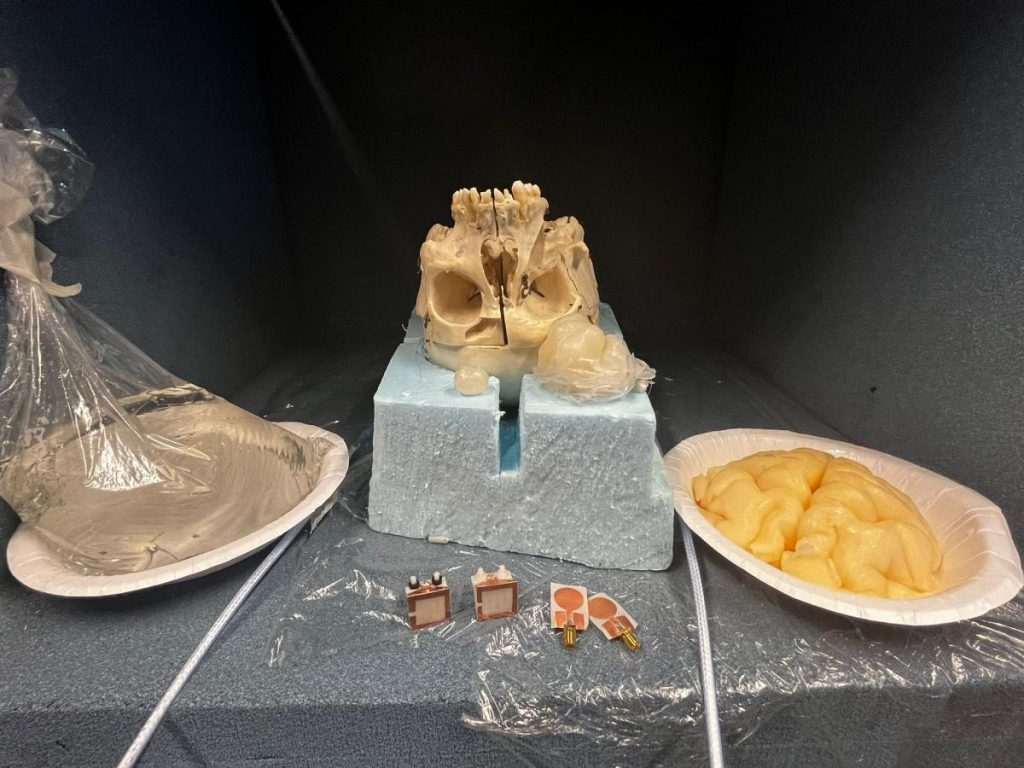
Monitoring and diagnosing solutions for future wireless hospitals
Interest in portable medical diagnosis and monitoring systems has grown dramatically in scientific circles and in the mainstream media. The attention is partially driven by the portable devices’ potential to address well-acknowledged concerns such as overburdened healthcare in growing cities, assistance for an ageing population, and equality in rural health care. Portable medical monitoring also supports diagnosis and medical treatments in hospitals and can be used for diagnosis in exceptional situations like pandemics when hospital visits are limited.
Recently, researchers have turned their attention to new microwave-based techniques that can be used for various medical monitoring and diagnosis applications. These techniques give new promise to developing portable, low-power, low-cost diagnostic devices.
“In cases of serious physical illnesses, like a stroke, which can result in severe disability or even death, prompt diagnosis is needed. For example, if we could confirm a stroke already while the patient is in the ambulance, the treatment could begin sooner, and the patient’s chances of survival would dramatically improve. Also, detecting blood clots early is critical for avoiding major thrombosis. Currently, all the detection methods we use – magnetic resonance imaging (MRI), computer tomography (CT), and ultrasound – require a hospital visit. Patients with suspected blood clots in rural locations may travel for hours to undergo blood clot verification. Therefore, there is an obvious need for portable blood clot detecting instruments,” says Mariella Särestöniemi, a postdoctoral researcher at the University of Oulu who works in the 6G-enabled sustainable society (6GESS) project as a Docent in WBAN radio channel modelling for medical diagnosis and monitoring.
Another timely and significant research area Särestöniemi reveals is tumour detection using portable devices. Microwave-based brain tumour detection techniques are of interest to researchers because they would allow portable tumour diagnosis equipment to be utilized as a preliminary diagnosis approach in remote locations. Because microwaves can permeate the entire head, microwave-based techniques can be used to image the brain through the skull. The method is based on detecting changes in signal propagation caused by heterogeneous tissue.
Detecting breast tumours has also been studied intensively for years. Recently, there’s been renewed interest in developing a self-monitoring vest for microwave-based breast cancer diagnosis. With easily accessible devices, we may be able to reach women who decline in participate in routine screenings like mammography due to distance or fear of pain.
How are body abnormalities detected using radio channel analysis?
Abnormalities like tumours, blood clots, or haemorrhages can be detected using radio channel analysis because their dielectric properties (e.g., relative permittivity and conductivity) differ from those of the surrounding tissues. Tumour detection, for example, is predicated on the notion that tumours have significantly greater relative permittivity values than surrounding tissues. Consequently, dielectric properties cause differences in propagation time, and power loss as the signal passes through the anomalous areas.
Intelligent channel analysis detects and localises anomalies by analysing radio channel characteristics between many antennas situated in the area where irregularities are presumed to be present and comparing them to reference data. With sensitive receivers, changes in radio channel data can be noticed, and the data can be evaluated in a server computer using AI-based algorithms. AI is employed to obtain an extensive reference data set to determine which changes in channel responses are attributable to variances in the physical parameters of the area under study and which are due to tumours of varying sizes.
One suggested approach for realising medical monitoring systems and remote healthcare is to merge Wireless Body Area Networks (WBAN) and 5G/6G connection so that WBAN captures in-body sensor data, which is then communicated to a hospital, for example, via 5G/6G networks. WBAN standard IEEE802.15.6 includes e.g., the UWB frequency band 3.1-10.6 GHz, a strong alternative for in-body, on-body, and off-body communications.

The 6G-enabled sustainable society (6GESS) programme capitalises on the 6G Flagship’s technological expertise to develop the scientific framework for a data-driven, hyper-connected future society in which digital eHealth and future energy systems are intertwined. 6GESS investigates new technologies to help make healthcare and energy systems more democratic and efficient in the future. It will also help healthcare and energy providers as well as citizens become more involved in developing and using data-driven and digitised solutions.